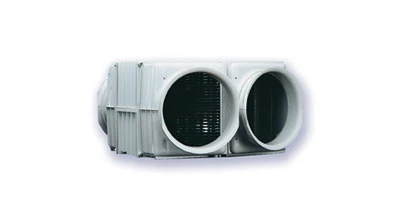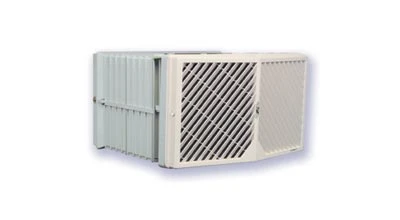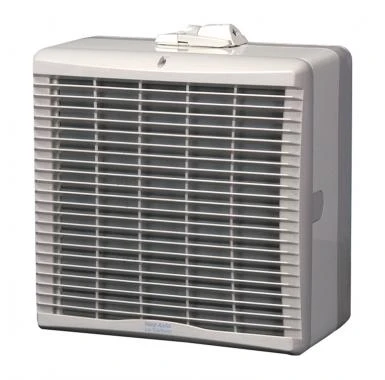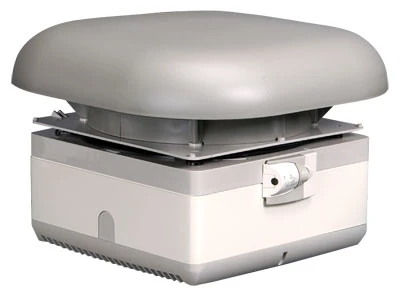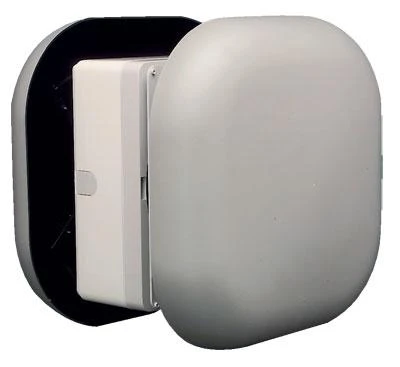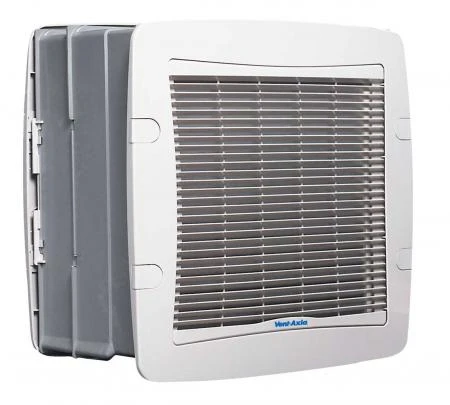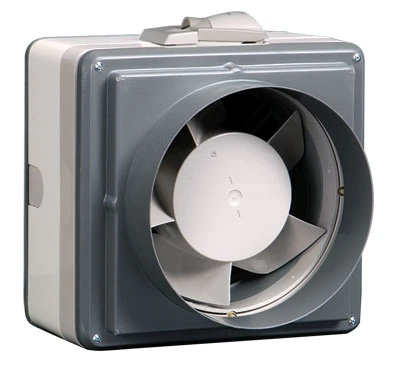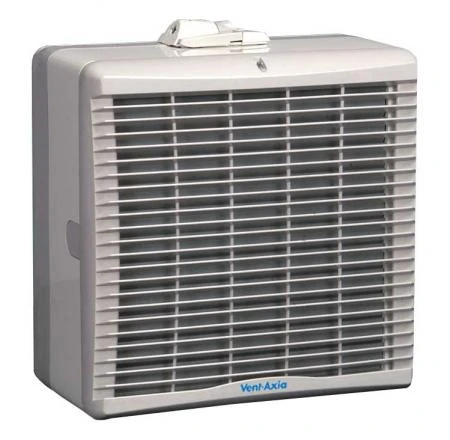Product Search Results
26 matching products found (showing 1 - 15)
- Efficient 550m3/h heat recovery ventilation unit or high performance 900m3/h extract fan
- Lightweight
- Integral shutters on X type model
- Up to 70% heat recovery
- Controller with sensor mode, allows a range of sensors to be used in conjunction with the HR500 and HR500X units
- IPX5 rated
- Efficient 550m3/h heat recovery ventilation unit or high performance 900m3/h extract fan
- Lightweight
- Integral shutters on X type model
- Up to 70% heat recovery
- Controller with sensor mode, allows a range of sensors to be used in conjunction with the HR500 and HR500X units
- IPX5 rated
- Patented electronic shutter system ensures quiet, trouble free operation
- Shutter open/fan off mode
- Low sound levels
- Easy fit connector Top Socket, standard on all models
- Designed for single or double glazing up to 32mm thick
- Extract/intake models in 4 sizes: 6”, 7”, 9” and 12”
- Patented electronic shutter system ensures quiet, trouble free operation
- For the very best from your fan use the Ecotronic controller
- T-Series controllers and sensors save energy by only switching on the units when you want them to, either manually or automatically
- Easy fit connector Top Socket, standard on all models
- Extract/intake models in 4 sizes: 6”, 7”, 9” and 12”
- Specially designed to provide extract/intake ventilation in darkrooms, X-ray areas, etc
- Patented electronic shutter system ensures quiet, trouble free operation
- For the very best from your fan use the Ecotronic controller
- Integrated component design allows all parts to be dismanted for cleaning without the use of specialist tools
- Easy fit connector Top Socket, standard on all models
- Patented electronic shutter system ensures quiet, trouble free operation
- Easy fit connector Top Socket, standard on all models
- Extract/intake models in 4 sizes: 6”, 7”, 9” and 12”
- Colour: soft tone grey
- Patented electronic shutter system ensures quiet, trouble free operation
- For the very best from your fan use the Ecotronic controller
- Easy fit connector Top Socket, standard on all models
- Extract/intake model in 3 sizes: 6”, 9” and 12”
- Patented instantaneous electronic shutter system ensures quiet, trouble free operation
- For the very best from your fan use the Ecotronic controller
- Easy fit connector Top Socket, standard on all models
- Patented electronic shutter system ensures quiet, trouble free operation
- Shutter open/fan off mode
- Low sound levels
- Easy fit connector Top Socket, standard on all models
- Designed for single or double glazing up to 32mm thick
- Extract/intake models in 4 sizes: 6”, 7”, 9” and 12”
- Patented electronic shutter system ensures quiet, trouble free operation
- For the very best from your fan use the Ecotronic controller
- T-Series controllers and sensors save energy by only switching on the units when you want them to, either manually or automatically
- Easy fit connector Top Socket, standard on all models
- Extract/intake models in 4 sizes: 6”, 7”, 9” and 12”
- Specially designed to provide extract/intake ventilation in darkrooms, X-ray areas, etc
- Patented electronic shutter system ensures quiet, trouble free operation
- For the very best from your fan use the Ecotronic controller
- Integrated component design allows all parts to be dismanted for cleaning without the use of specialist tools
- Easy fit connector Top Socket, standard on all models
- Patented electronic shutter system ensures quiet, trouble free operation
- Easy fit connector Top Socket, standard on all models
- Extract/intake models in 4 sizes: 6”, 7”, 9” and 12”
- Colour: soft tone grey
- Patented electronic shutter system ensures quiet, trouble free operation
- For the very best from your fan use the Ecotronic controller
- Easy fit connector Top Socket, standard on all models
- Patented electronic shutter system ensures quiet, trouble free operation
- Shutter open/fan off mode
- Low sound levels
- Easy fit connector Top Socket, standard on all models
- Designed for single or double glazing up to 32mm thick
